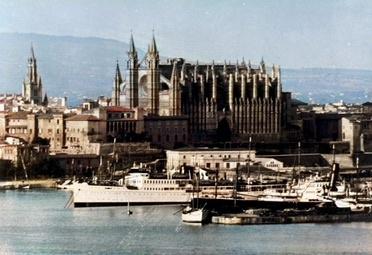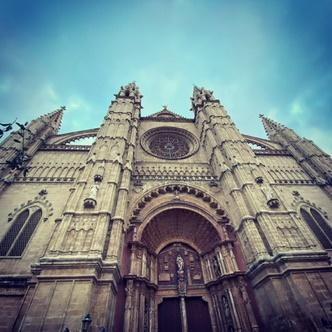What differences can be observed between the Gothic elements and Baroque altarpieces within the church?
Similar Topics
gothic altarpieces
baroque altarpieces
gothic vs baroque
church art styles
baroque ornamentation
gothic verticality
altarpiece decoration
artistic church history
Within many historic churches, the contrast between Gothic elements and Baroque altarpieces is striking and reflective of evolving artistic and spiritual sensibilities. Gothic altarpieces typically embody a sense of verticality and austerity, characterized by intricate but restrained ornamentation. Their design emphasizes height and light, often incorporating pointed arches, delicate tracery, and figures that appear elongated and stylized, evoking a sense of the divine striving upwards. The color palette in Gothic altarpieces is generally more subdued, with an emphasis on naturalistic but modest use of color, allowing the sculpted details and architectural lines to dominate the visual impact.
In contrast, Baroque altarpieces are far more elaborate and dramatic, intended to inspire awe and emotional engagement. They often feature a profusion of swirling forms, gilded surfaces, and richly sculpted figures caught in dynamic poses. The Baroque style favors bold colors, lavish gold leaf, and theatrical lighting effects achieved through deeply carved recesses and protrusions that create intense contrasts of light and shadow. This approach reflects the Counter-Reformation’s goal of engaging the faithful through visual splendor and emotional intensity. Baroque altarpieces are typically more crowded visually, with a sense of movement and energy, designed to draw the viewer into a dramatic and immersive spiritual experience.
The differences between these two styles within a church not only highlight developments in artistic techniques but also reflect broader cultural shifts. Gothic altarpieces express a contemplative, lofty spirituality marked by order and symmetry, while Baroque altarpieces embody the exuberance and emotional power of the later period. Together, they offer visitors a vivid narrative of the church’s artistic history and theological emphases across different centuries, making the exploration of these works a deeply enriching experience.
In contrast, Baroque altarpieces are far more elaborate and dramatic, intended to inspire awe and emotional engagement. They often feature a profusion of swirling forms, gilded surfaces, and richly sculpted figures caught in dynamic poses. The Baroque style favors bold colors, lavish gold leaf, and theatrical lighting effects achieved through deeply carved recesses and protrusions that create intense contrasts of light and shadow. This approach reflects the Counter-Reformation’s goal of engaging the faithful through visual splendor and emotional intensity. Baroque altarpieces are typically more crowded visually, with a sense of movement and energy, designed to draw the viewer into a dramatic and immersive spiritual experience.
The differences between these two styles within a church not only highlight developments in artistic techniques but also reflect broader cultural shifts. Gothic altarpieces express a contemplative, lofty spirituality marked by order and symmetry, while Baroque altarpieces embody the exuberance and emotional power of the later period. Together, they offer visitors a vivid narrative of the church’s artistic history and theological emphases across different centuries, making the exploration of these works a deeply enriching experience.
🧩 Related Questions
Related Question
How do visitors to Mallorca experience and support the island’s organic farming sustainability efforts?
Related Question
Are there any wildlife regulations or guidelines in Mallorca to help prevent snake encounters?
Related Question
What traditional festivals in Mallorca are influenced by its historical heritage and how can tourists experience them?

